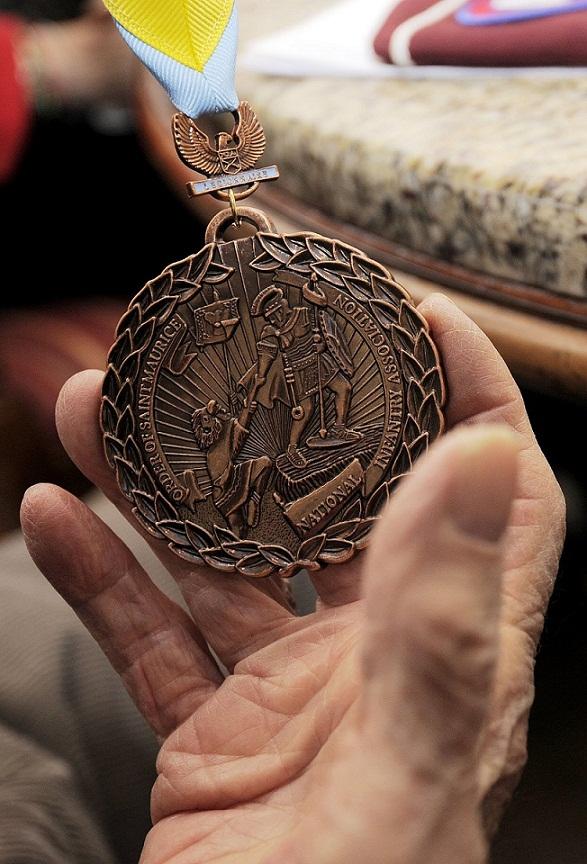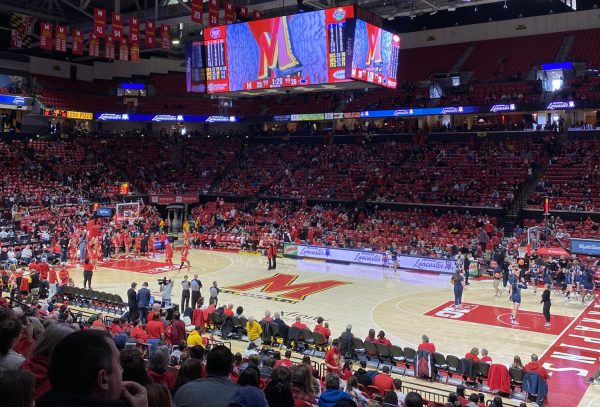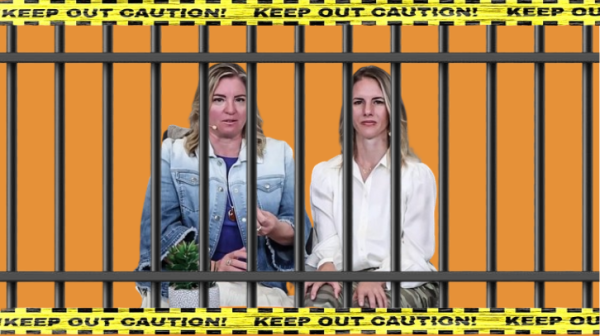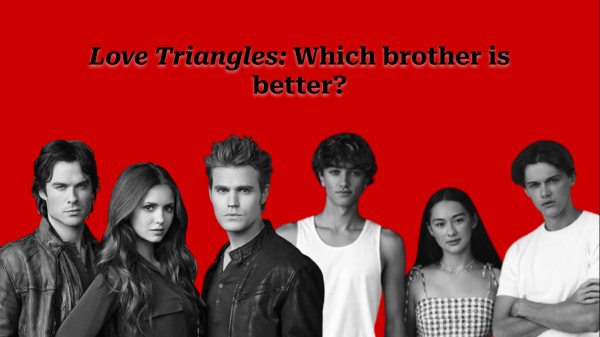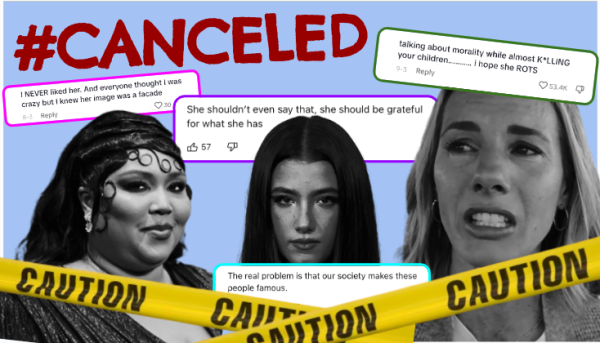Why should we remember the Holocaust?
Kim Hairston/Baltimore Sun/MCT Campus
Michael J. Romanelli, a World War II infantry veteran, displays his Order of Saint Maurice in Glen Arm, MD.
April 25, 2014
Why do we remember the Holocaust? Why do we consider it important? Why are there memorials and museums, books and films, and numerical tattoos that are treated with the same reverence as saints’ relics? Why, why, why? Why do we care at all? It happened on the other side of the Atlantic Ocean, and to people the vast majority of whom weren’t American citizens. It happened nearly seventy years ago, too. It’s dead and done.
Except it’s not dead, and it’s not done.
After the conclusion of World War II in 1945 and for years afterward, many Holocaust survivors chose to immigrate to the United States. Many of these people had no homes to return to due to the intense bombing that many cities in Europe and the Soviet Union had sustained. These people brought their memories and voices to America and made it important to remember the Holocaust and honor the people who died in it.
Seeing the concentration camps and their inmates also made a deep impression on American soldiers during the war, starting with the liberation of the Ohrdruf concentration camp on April 5th, 1945. General Dwight D. Eisenhower personally visited the camp, and came away sickened and horrified. “The things I saw beggar description,” the General said to one of his colleagues.George Patton, an American general famed for his toughness, refused to enter certain areas of the camp, which Eisenhower claimed was because “he would get sick if he did so.”
However, it’s been 69 years since the end of World War II. Most living veterans are in their eighties and nineties. According to the National World War II Museum, approximately 550 American veterans of the second World War die every day. And the Jerusalem Post, an Israeli newspaper, reports that “one Holocaust survivor dies every hour in Israel.” Today, there are approximately 350,000 still-living Holocaust survivors throughout the world and nearly one and a half million American World War II veterans.
By the time most of us are teaching our own children, it’s likely that there will be very few — if any — Holocaust survivors or World War II veterans. These people are the living receptacles of our memories of the past, and their role as witnesses to the atrocities committed by the Third Reich give us a connection to those events.
Many Holocaust survivors living in America volunteer at the United States Holocaust Memorial Museum to talk about what they lived through during the Second World War and to answer the questions of the people who come to visit the museum. The time when these people won’t be around, when we will have nothing but photos and text and reels of grainy black-and-white film to tell us about what had happened behind the German lines, is drawing near. After these veterans and survivors are gone, will we still remember the Holocaust? Will we still consider it important?
The Holocaust and World War II are still affecting our lives today. Keolis North America, a subsidiary company of the SNCF (Société Nationale de Chemins de fer Français, the national French rail company) is attempting to partner with the Purple Line in Maryland, but is facing difficulties. In France during World War II, the SNCF used its trains and railroads to transport Jews and other unacceptable French citizens to death camps in Germany and Poland. Until recently, lawmakers had been debating a bill that proposed to block the SNCF from partnering with the Purple Line until the company agrees to pay reparations for its involvement in the Final Solution to Holocaust victims living in the United States.
The effects of the Holocaust and the Second World War can be seen in more countries besides the United States. Cornelius Gurlitt, the son of deceased World War II-era art collector Hildebrand Gurlitt, had 1,500 pieces of art from his father’s private collection confiscated by German authorities. The paintings were obtained by Hildebrand during the 1930s and 40s and kept in residences in Germany and Austria. It’s possible that some of the paintings were seized from Jewish owners rather than obtained legally, and the market for modern art went underground after Hitler banned it in Germany. It’s difficult to determine the exact methods of acquisition that Hildebrand Gurlitt used for each piece of art, and some pieces are undoubtedly the rightful property of his son and heir, Cornelius. At the present time, though Gurlitt would like to have all of the confiscated art returned to him, other claimants are attempting to retrieve at least some of the paintings. For many people, a painting that once hung in an ancestor’s living room is the only tangible connection they might have to a deceased relative.
Despite the contemporary issues that show just how much influence the Holocaust still has in the 21st century, there are people in the world who deny that the Holocaust ever happened. Holocaust deniers typically believe that the death camps and gassing chambers did not exist; that all evidence of the Holocaust (from filmed footage to the diary of Anne Frank) is fraudulent; and that the number of Jews killed (five million to six million) is a gross overstatement. They believe that the Holocaust is nothing but a hoax designed by a worldwide network of Jewish conspirators that is intended to further Jewish interests at the expense of other people. Even in the act of denying its existence these people show that the Holocaust has influenced them as well.
The number of people who deny the Holocaust is growing, and I find that deeply unsettling.
The booklet Did Six Million Really Die?, published by Ernst Zündel, argues the validity of various war crime trials (especially the Nuremberg Trials) and examines European census results in an attempt to show that the population of Jews in Europe was not large enough to support a genocide on the scale of the Holocaust. The booklet was banned in Germany and South Africa, and Zündel spent 15 months in prison.
Different from Holocaust deniers, but occasionally lumped into the same general category, are the neo-Nazis: people who admire Adolf Hitler and agree with his goals. Neo-Nazis do not typically deny the existence of the Holocaust but rather choose to view the extermination of Jews and Judaism as a favorable event. Since the philosophical doctrines of the Third Reich emphasize racial purity, neo-Nazism appeals to white supremacists with Klu Klux Klan sympathies. Many countries ban Nazi-sympathetic literature, music, and websites, but neo-Nazis can freely express and publish their opinions in the United States because the First Amendment guarantees their freedom of speech.
The neo-Nazi rock bands Landser (a nickname for a low-ranking soldier) and Macht und Ehre (“Might and Honor”) were banned in their country of origin (Germany) and their albums are neither manufactured nor available for sale there. Landser performed only one public concert before being named a criminal organization by German legal authorities, and they did so wearing masks. Most of the CDs for these bands were manufactured abroad, in the United States or Canada, and then smuggled into Germany from the Netherlands.
In many areas of the world the political climate is slowly morphing into something that resembles the same environment in which Hitler came to power, and nobody seems concerned about this except me.
Neo-Nazism is on the rise and growing steadily, transforming from a product of the punk subculture into a political force with the power to coerce national legislative bodies into complying with their desires. Golden Dawn was registered as a political party in Greece in 1993, founded and led by Nikolaos Michaloliakos. Its symbol is a Greek meander shaped like a swastika that is encircled by a laurel wreath. In the magazine that Michaloliakos published in Greece between 1980 and 1984, Chrysi Avgi (Greek for “Golden Dawn”), he praised Adolf Hitler, and in 2010 he celebrated his election to the Athens city council with a Nazi salute.
As of 2012, the extreme right-wing party movement has 18 out of 300 seats in the Hellenic Parliament of Greece. This is nothing, however, in comparison to the power that the party wields in the streets of Athens. Greece’s poverty and high level of unemployment has caused a tide of anti-immigration sentiment that has boiled over into open violence. Foreigners and immigrants found by Golden Dawn members are brutally assaulted, sometimes to the point of hospitalization, and many non-Greeks who go to the police to press charges against assailants are threatened with counter-charges while local supporters of Golden Dawn wander freely through the station.
Neo-Nazism isn’t limited to Greece. In Austria, prominent members of the Freedom Party (FPÖ) joined a procession to honor the grave of a famous Luftwaffe pilot who flew under Nazi colors during World War II. Also in the procession was Gottfried Kussel, who was imprisoned for eight years for promoting Nazi ideology and is now partway through a second, 11-year prison term.
The rise of neo-Nazism corresponds with the decline of the number of Holocaust survivors and World War II veterans, and this is not a coincidence. When there was a larger number of people in the world who had firsthand experience with the cruelties of the Third Reich, there were more people to speak out against anyone attempting to organize the emergence of a Fourth Reich. Now, however, there aren’t so many of those people still around. We, the current generation, must choose to remember the Holocaust because it won’t be too long before we will have no one to remember it for us.
We must remember the truth. We must talk about it in our schools and in our homes. We must write and draw and film and compose and sing, all in the name of remembering, for if we do not then our blurred, fragmented memories will be twisted and distorted into lies as black as Schutzstaffel uniforms.


